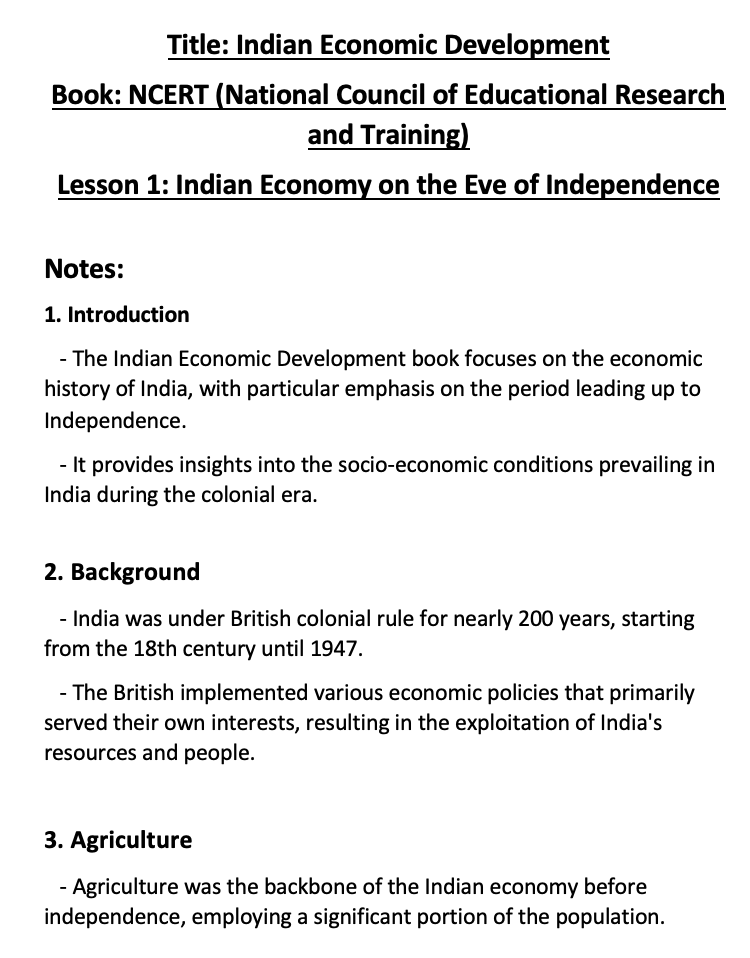Indian Economy Under British Rule (Grade A+)
Summary:
The summary highlights the key points covered in Lesson 1 of the Indian Economic Development book by NCERT. The lesson focuses on the economic history of India before independence, shedding light on various aspects of the colonial era. It discusses the exploitative nature of British colonial rule, and the impact on agriculture, industry, trade, infrastructure, and the financial sector. The lesson also addresses socio-economic challenges such as poverty, illiteracy, gender inequality, and caste discrimination. Additionally, it explores the relationship between the national movement for independence and economic issues, including the Swadeshi movement and the role of prominent leaders.
Excerpt:
Indian Economy Under British Rule
Title: Indian Economic Development
Book: NCERT (National Council of Educational Research and Training)
Lesson 1: Indian Economy on the Eve of Independence
Notes:
- Introduction
– The Indian Economic Development book focuses on the economic history of India, with particular emphasis on the period leading up to Independence.
– It provides insights into the socio-economic conditions prevailing in India during the colonial era.
- Background
– India was under British colonial rule for nearly 200 years, starting from the 18th century until 1947.
– The British implemented various economic policies that primarily served their own interests, resulting in the exploitation of India’s resources and people.
- Agriculture
– Agriculture was the backbone of the Indian economy before independence, employing a significant portion of the population.
– The British implemented land revenue systems like the Zamindari and Ryotwari systems, which led to widespread exploitation of farmers and excessive tax burdens.
– The British introduced cash crops, resulting in a shift from food crops, causing famines and food shortages in some regions.
- Land Revenue System:
- The lesson discusses the prevalent land revenue system under British rule.
- The Permanent Settlement of 1793, Ryotwari Settlement, and Mahalwari Settlement are explained.
- These systems affected land ownership patterns, agricultural practices, and the economic condition of peasants.
- Agricultural Challenges:
- The challenges faced by Indian agriculture, such as fragmented landholdings, lack of irrigation facilities, outdated technology, and absence of credit facilities, are highlighted.
- The Zamindari system and exploitative tenancy practices exacerbated the plight of the peasants.


Reviews